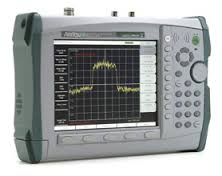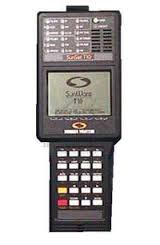
Castle Rock Microwave is constantly evaluating different tools, software apps, pieces of test equipment and methods. We do this to help streamline our broadband wireless deployment and maintenance obligations. Everyone loves the allure of new toys, but few have unlimited budgets. One could easily overspend in these areas. This post should help you identify the 5 best tools for the broadband wireless technician. In addition, it should identify the right time to invest in each.
Everyone deserves the right tools at the right time. This helps you be the most effective in your job. It also ensures a successful outcome. At minimum, there is a list of necessary, non-negotiable hand tools that everyone needs. First, a full compliment of screwdrivers. You need big and small, flat and Phillips. Also, Allen wrenches, combination crescent/box wrenches and socket sets. Additionally, a full set of ratcheting wrenches. Don’t forget portable power tools, tape measure, torpedo level, lug crimpers, wire strippers, and side cutters. You’ll also need needle nose pliers, a simple CAT5e / CAT6 continuity tester, digital voltmeter, and a good compass with inclinometer. Finally, you should always include binoculars and a digital camera.
This list isn’t exhaustive. Your first installation usually dictates which tools you need the most. In addition, it’s critical to have manufacturer-recommended coax stripping and termination tools. We keep tools on hand for LMR-400 and LMR-600 as well as 1/2″ Heliax. These are the three most popular types of coax for our deployments. We also use manufacturer-recommended CAT5e and CAT6 termination tools. While these may be pricier than alternatives, they are specifically intended for the type of connectors we use from Sentinel Connector Systems.
We discourage the use of utility tools like knives, adjustable wrenches, vise grips, most pliers and striking tools. These items are rarely necessary and often cause damage. Use the right tool for the job, every time.
Broadband wireless radios have become more sophisticated. As such, one might think fewer pieces of test equipment are necessary. Some newer products have built-in spectrum analyzers. There are even a small number of radios with built-in bi-directional couplers and VSWR measurement capabilities.
However, if you’re like us and support a wide variety of radio products, it’s hard to count on having everything you’ll need built into the radio. As a result, we believe you need the following pieces of test equipment, listed by importance:
* Broadband power meter
* Cable and antenna analyzer
* Spectrum analyzer
* Ethernet throughput testing device
* TDM bit error rate tester
 We’re a huge fan of the Praxsym t-meter. It’s an inexpensive device to measure the transmit power of a radio, test coax connections, indicate VSWR of the transmission line, and validate the integrity of an antenna. This recently paid for itself while troubleshooting a licensed-band 6GHz radio system. It would have been nearly impossible to isolate the bad radio without this device. The radios would not link up and we couldn’t tell which radio had a bad transmitter or a bad receiver. Within minutes we connected the Praxsym t-meter PM-6000 to each radio in order to identify the radio with a bad transmitter. This tool will save hours and days of time on long wireless paths.
We’re a huge fan of the Praxsym t-meter. It’s an inexpensive device to measure the transmit power of a radio, test coax connections, indicate VSWR of the transmission line, and validate the integrity of an antenna. This recently paid for itself while troubleshooting a licensed-band 6GHz radio system. It would have been nearly impossible to isolate the bad radio without this device. The radios would not link up and we couldn’t tell which radio had a bad transmitter or a bad receiver. Within minutes we connected the Praxsym t-meter PM-6000 to each radio in order to identify the radio with a bad transmitter. This tool will save hours and days of time on long wireless paths.

Many wireless carriers, utility companies, public safety agencies, and high frequency trading firms require line sweeping on transmission line installed in their systems. There are a handful of options available. Some include Anritsu, Bird, Agilent, Keysight, and Kaelus. However, the field narrows as frequency increases above 6GHz. Cable and antenna sweeping is critical to establish a performance baseline at deployment. Doing this helps identify problems over time. It also validates the quality of an installation. We purchase the VNAMaster MS2038C from Anritsu. It is a cable and antenna analyzer with a built-in spectrum analyzer that goes up to 20GHz.

Many radios now come with built-in spectrum analyzers. While this is handy, sometimes a separate, portable device is still required. A stand-alone spectrum analyzer is very helpful in detecting interference. You can use it from the ground to verify a deployed radio is transmitting. We have used portable devices from HP, Anritsu and others. We own an Avcom spectrum analyzer for the license-exempt frequency bands. We also recently invested in a more full-featured unit that allows us to pursue projects below the microwave radio band. Such bands support in-building wireless like BDAs, DAS, LMR, etc. Finally, there’s a new family of spectrum analyzer products from SAF Tehnika. We believe these will address the needs of most broadband wireless technicians and field engineers for microwave bands. A noteworthy nugget regarding the SAF Tehnika spectrum analyzers is that they can be purchased in segments of frequencies bands, making the cost of entry very attractive.

Most of the microwave work done today involves Ethernet transport. Many end users want proof of the quality of their wireless system. They usually want this in terms of maximum Ethernet capacity and latency. There are many inexpensive ways to do this. You could use a pair of PCs, but they are generally not very accurate or conclusive. Many customers require RFC2544 test results. This stresses the system at various frame sizes and speeds to find the performance limitations of the wireless system. Valuable information about latency and jitter can also be obtained with this kind of equipment. There are many sources available. We have the most experience with JDSU (Viavi). We have also seen NIDs (Network Interface Devices) as a less expensive alternative to a hand held test device. These small form factor computers with a web-based interface can be used to run similar tests as the equipment described above. This equipment is usually helpful in pairs. One device on each end. One such manufacturer of this type of equipment is Accedian.

The oldest piece of equipment in our cache is definitely not the least valuable. It’s a rare occasion that we install radios with T-1 interfaces. However, when we do, it’s quite helpful having the right equipment on hand to verify that T-1 traffic is properly transmitting. Often, the customer’s telecom equipment will provide this assurance. Yet, dedicated test equipment is a consistent mechanism to validate operation. We use an older piece of test equipment from Sunrise Telecom known as the Sunset T1 tester. These are fairly plentiful and inexpensive on eBay.

In addition to the hand tools and test equipment described above, we maintain a kit of waveguide to coax transitions for 6, 11, 18 and 23GHz. We also keep short precision coax cables and attenuators to bench test radios before deployment and aid in the troubleshooting process. We also sell these kits to folks that want to have them on hand.
There are other tools we keep handy. First on our “nice to have” list is a laser ranger finder like the TruPulse 360B for measuring structure and antenna heights. Then, an earth ground tester from Fluke or Megger which measures ground loop resistivity and ground rod testing. Additionally, we’d want a GPS-enabled high-resolution camera. While a mobile phone can provide geo-tagged photos, a high-resolution camera provides crisp detail on a radio or antenna hundreds of feet above the ground. Finally, we hope some day to get to play with some of the antenna alignment tools from Spectracom, Sunsight or 3Z Telecom.
The tools described above are a necessity and non-negotiable in terms of timing. You minimally have to have these tools to successfully deploy and maintain a broadband wireless system.
At the very least, we recommend a Praxsym t-meter, or comparable device. It is relatively inexpensive and can save a tremendous amount of time in troubleshooting systems 6GHz and below.
Depending on the types of radios you install and support most often, some other pieces of test equipment are more critical than others. Generally speaking, test equipment should be purchased as it can be afforded. A great way to accelerate your time to purchase is to find a reliable source for used equipment.
We generally wouldn’t buy any equipment until we’ve identified a time when our rental costs would approach or exceed the cost to buy the equipment new.
The inability to afford test equipment isn’t an excuse not to have it when needed. Test equipment in each of the categories above can be rented on a short term basis which is an excellent way to overcome the issue of cost.
Do you have a tool or piece of test equipment that you simply cannot live without? Share it here, please!
"We guarantee your system will work as designed for the first year, or we'll make it right."
Please CLICK HERE to read our full Terms & Conditions